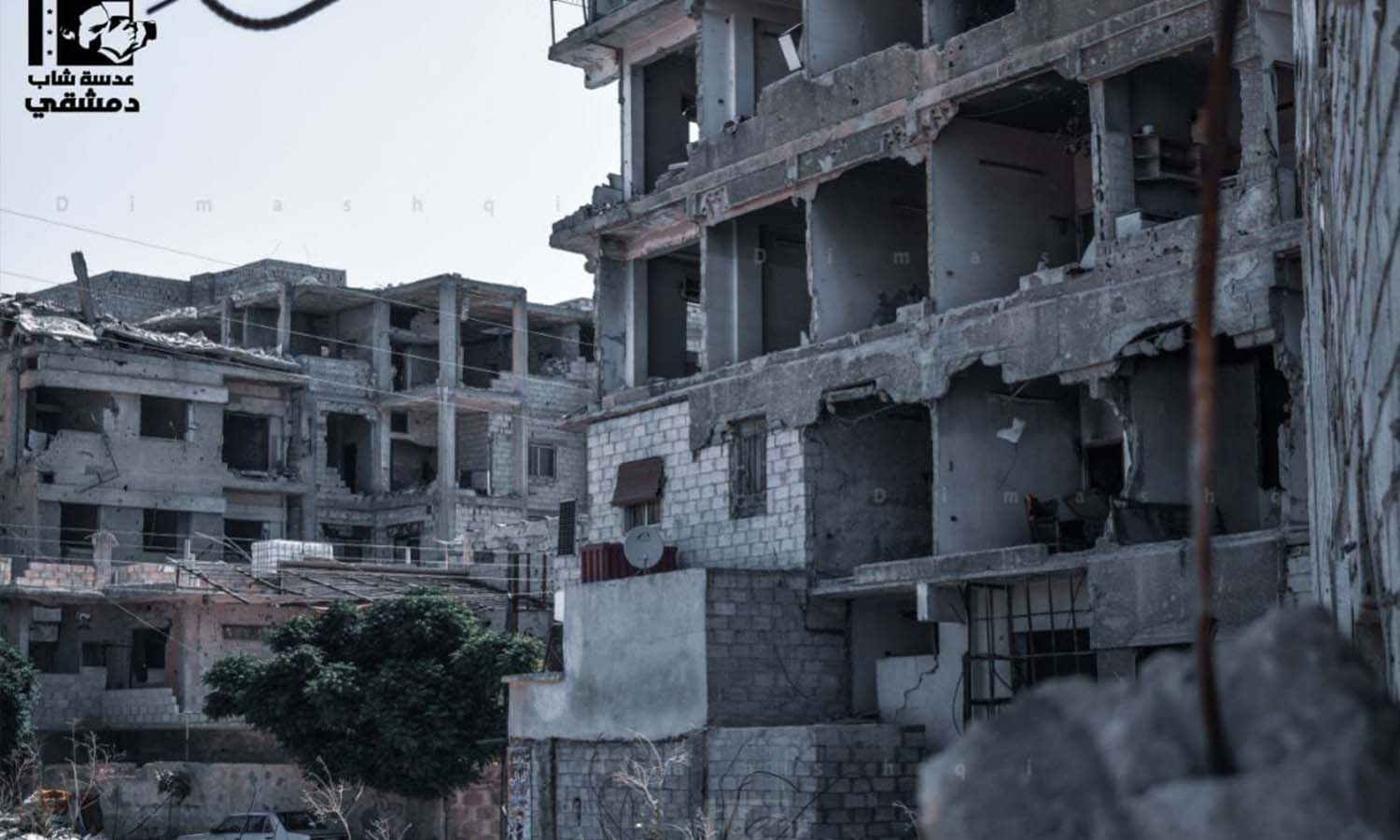After thousands of Syrians spent years outside their country, nostalgia drives many of them to look for photos of neighbourhoods and areas where they have spent many years of their lives. Others, however, want to see real photos documenting the reality of the country for various reasons, the most prominent of which may be curiosity to know how the situation in their areas has become.
On the other hand, many social media accounts transmit photos and videos, monitoring some streets and neighbourhoods within regime-controlled areas.
Many of these clips receive a great deal of interaction from Syrians abroad, showing comments mentioning the names of the neighbourhoods and memories in each of them, along with requests to see more areas that they have not seen in years, according to Enab Baladi.
Between documentation and changing facts
With accounts that convey this type of content proliferating, some of them try to convey the truth by highlighting all areas, including the destroyed areas where the effects of the bombing are still present in the landmarks of their streets.
Videos in other accounts are titled “Syria is Fine,” “The Return of Life,” and other headlines that try to convey an incomplete picture of regime-controlled areas; they portray life there as “comfortable and safe.”
Enab Baladi spoke to the owner of one of the accounts, depicting various areas absent from the camera lenses due to the spread of destruction in them.
Read Also: The Influencers ‘Whitewashing’ Assad Regime Despite War Crimes
The owner of the account (Enab Baladi didn’t mention the name of the account for security reasons) said that his nostalgia, years after his displacement from Aleppo, prompted him to look for clips or photos of the city. He did not find the content he desired, however. He realized that many areas of Aleppo and other destroyed places are almost absent from accounts that seek to document the reality of Syria.
After the young man found a video of a street in Aleppo city, work began on archival visual documentation of these areas as soon as he returned to visit his city.
“So that every nostalgic person can see his city,” the young man justified the decision to create the account. He noted that his decision was spontaneous, without the prior expectation that the account would receive much interaction.
The great interaction and constant requests to photograph more areas prompted the young man to work and convey the true picture of the reality of many areas. This included destroyed areas as well, which are difficult to reach. This made some of his narrow circle of acquaintances, who supported the idea of the account, share some additional clips with him, he said.
Despite the great importance of conveying real images of the reality of the regime-controlled areas, the Syrian regime has been able to exploit many foreign and Syrian YouTubers to convey the image it wants of the areas under its control through their accounts.
These accounts relied on the promotion of a “safe” and “victorious” Syria, as well as talking about a “good” living reality by focusing on “cheap” prices, despite the existence of dozens of monthly reports confirming the continued deterioration of living conditions in Syria.
The Syrian regime is working to restrict the content of these accounts and control the content of YouTubers, especially accounts whose owners show their personal identity.
This is reflected in the intensity of the clips showing normal life in Syria and the lack of clips depicting slums and destroyed neighbourhoods or people suffering from poverty, hunger, and insecurity.
This comes at a time when the various areas controlled by the regime are witnessing a weakness in the construction and reconstruction process, which prompted many people to restore or rebuild their destroyed homes after the Syrian and Russian aircraft bombed those areas during the control of the opposition.
The country is also witnessing a deterioration in the living and economic reality in light of the depreciation of the Syrian pound against the U.S. dollar and the decline in the average monthly income of Syrians, coinciding with the rise in the prices of goods and food products.
On April 5th, the World Food Programme (WFP) announced that three out of five Syrians are “food insecure” after the continued rise in food prices and the economy’s deterioration across Syria, according to 2021 data covered in the report.
This article was edited by The Syrian Observer. The Syrian Observer has not verified the content of this story. Responsibility for the information and views set out in this article lies entirely with the author.


